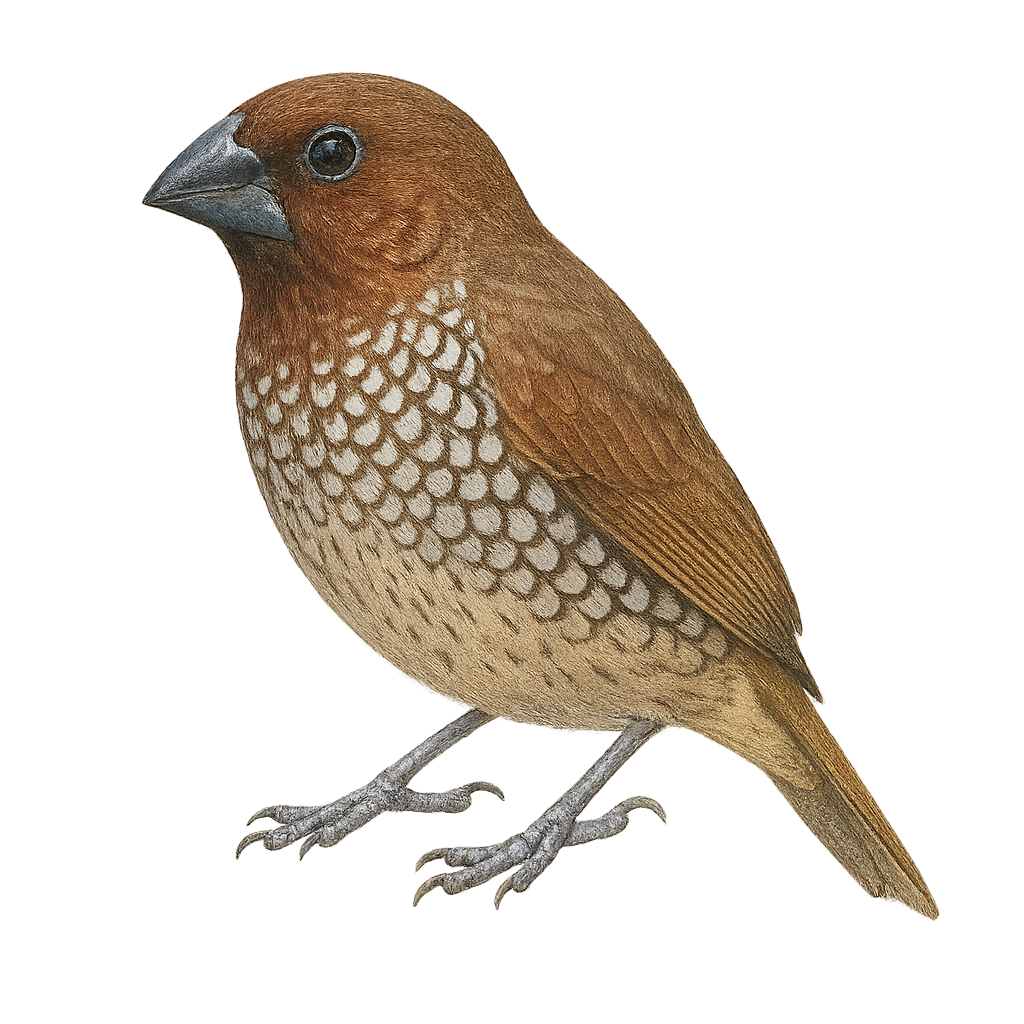Your wildlife photography guide.
Explore the scaly-breasted munia in detail, study its behavior, prepare your shots.
Where to observe and photograph the scaly-breasted munia in the wild
Learn where and when to spot the scaly-breasted munia in the wild, how to identify the species based on distinctive features, and what natural environments it inhabits. The WildlifePhotographer app offers tailored photography tips that reflect the scaly-breasted munia’s behavior, helping you capture better wildlife images. Explore the full species profile for key information including description, habitat, active periods, and approach techniques.
Scaly-breasted Munia
Scientific name: Lonchura punctulata

IUCN Status: Least Concern
Family: ESTRILDIDAE
Group: Birds
Sensitivity to human approach: Suspicious
Minimum approach distance: 5 m
Courtship display: April to July
Incubation: 12-14 jours
Hatchings: April to August
Habitat:
Fields, gardens, grassy areas
Activity period :
Primarily active during the day, with peak activity in the morning and late afternoon.
Identification and description:
The Scaly-breasted Munia, or Lonchura punctulata, is a small granivorous bird native to South and Southeast Asia. It is easily recognizable by its brown plumage with scaly patterns on the chest and belly. Measuring about 11 to 12 cm in length, this bird is often seen in flocks in fields, gardens, and grassy areas. It adapts well to human-modified environments, allowing it to thrive in both urban and rural areas. The Scaly-breasted Munia is a sociable bird, often seen feeding in groups. It primarily feeds on seeds but can also consume small insects. Its ability to adapt to various habitats and its gregarious behavior make it a fascinating bird to observe.
Recommended lens:
400 mm – adjust based on distance, desired framing (portrait or habitat), and approach conditions.
Photography tips:
To photograph the Scaly-breasted Munia, it is advisable to use a 400mm lens or longer to capture detailed images without disturbing the bird. Look for areas where these birds gather, such as fields or gardens, and be patient. Morning is often the best time to observe them, as they are more active. Use a tripod to stabilize your camera and wait for the bird to perch in an interesting position. The natural light of the morning or afternoon can add warmth and depth to your photos.
The WildlifePhotographer App is coming soon!
Be the first to explore the best nature spots, track rutting seasons, log your observations, and observe more wildlife.
Already 1 432 wildlife lovers subscribed worldwide

